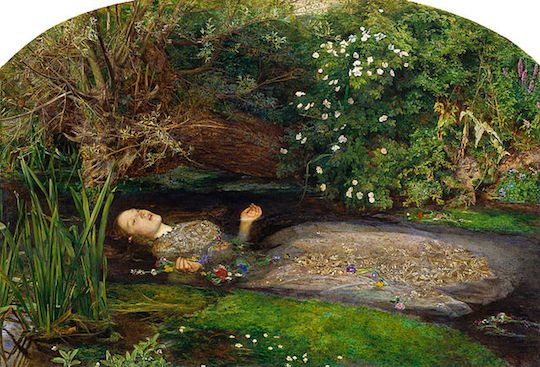Ophelia by Sir John Everett Millais (1851)
Tate Britain, London
Over a fireplace large enough to burn a sequoia hung a painting that glowed green and gold in the strange light. A woman in a long brocade gown floated on her back in a high-banked stream, her face pale, the water scattered with red and purple flowers. Ophelia, painted at the moment of her death by Sir John Everett Millais.
It was an oil painting, not a print, and it was exquisite, right down to the oddly shaped and intricately carved gold frame. So exquisite that for a moment I wondered if Athenaide had somehow acquired the original.
“I have always loved this painting.”
I stepped forward, blinking. So had I. She – I always thought of the painting as Ophelia herself – was one of the great masterpieces of Pre-Raphaelite art. But she was supposed to be in the Tate Britain Museum, in London. I knew that. Since beginning Hamlet, I’d gone to see her often, walking through the leafy shade along the Thames, ducking into the long room the color of roses at twilight where she held watery court between two paintings of women in startling blue gowns. Ophelia herself was strangely colorless, already fading to transparency, but the world in which she floated shone a brilliant, defiant green.
—Interred With Their Bones
I confess that here I have given Kate my own feelings about the original. Ophelia is one of my favorite paintings, and I go to see her whenever I’m in London: for a painting capturing the moment death, “she” seems weirdly, forcefully alive.
- Check out The Tate Britain’s Ophelia Learning Resource
- Listen to Khan Academy’s Dr. Beth Harris and Dr. Steven Zucker talk about the painting in a brief Smarthistory video:








